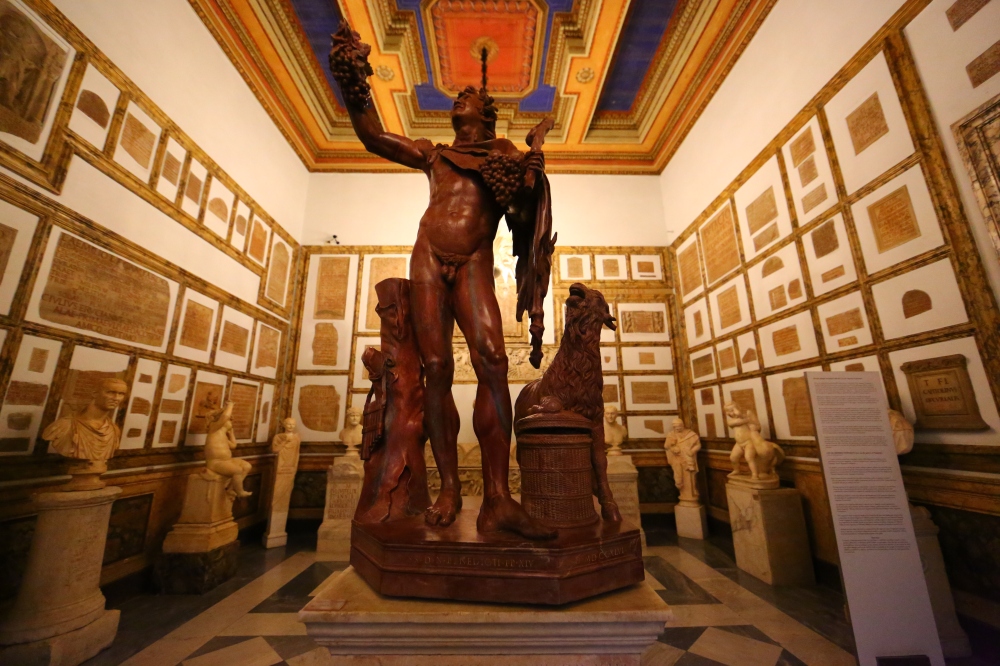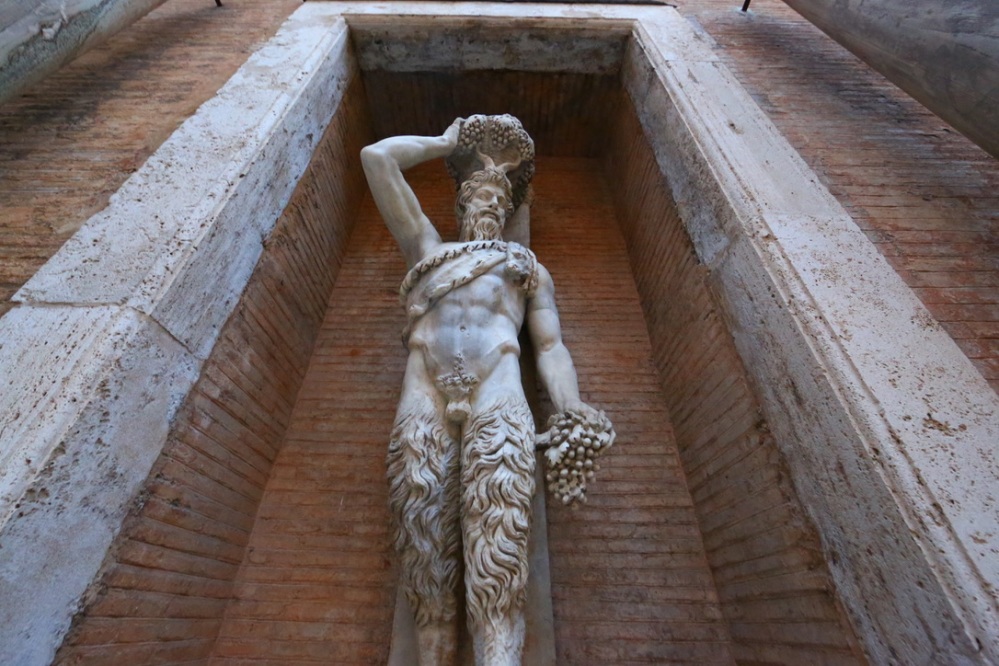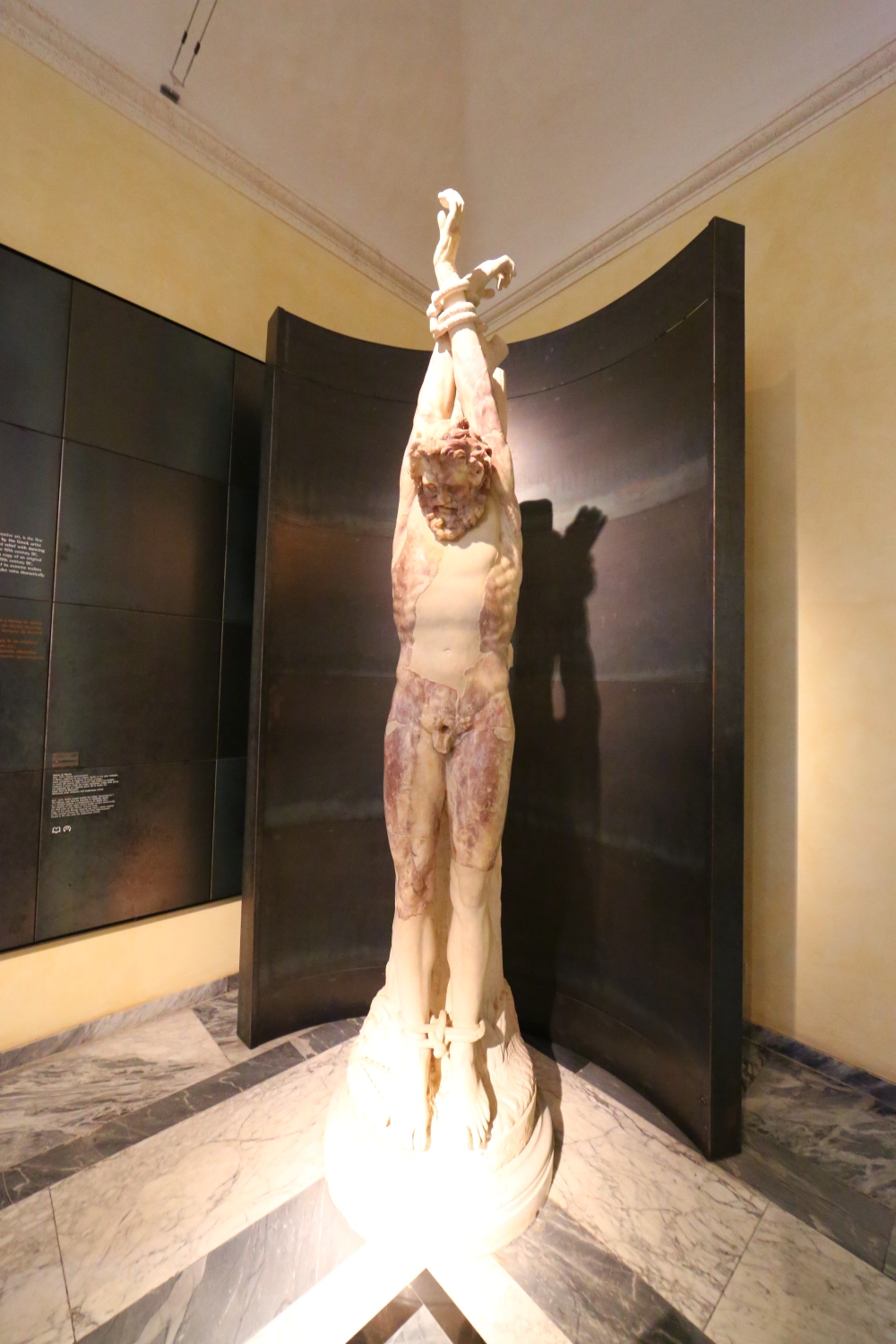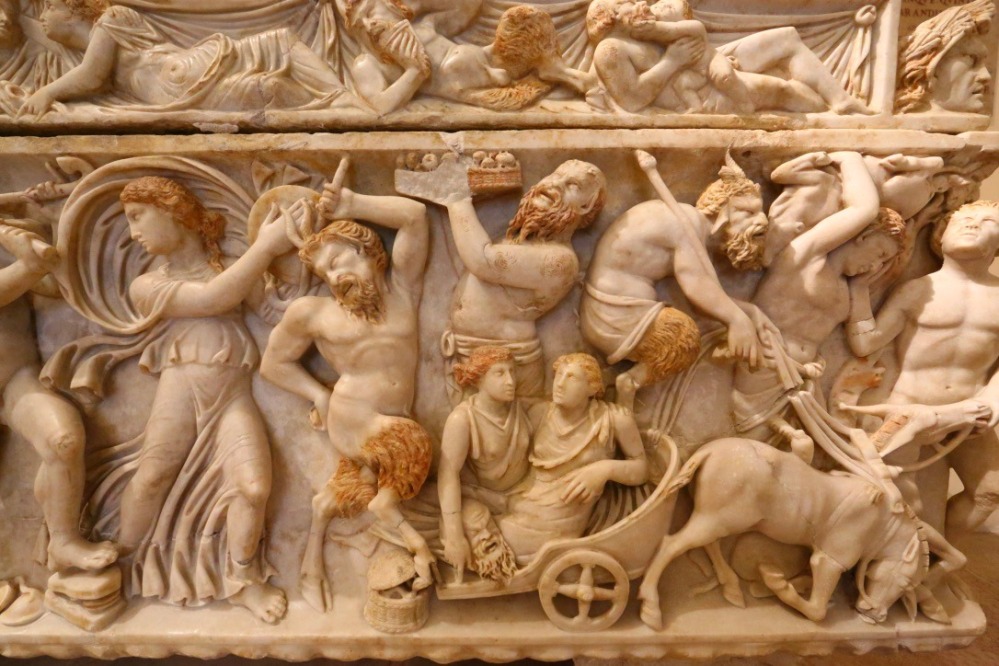I was at the Capitoline Museum in Rome last November. The Capitoline has been on my bucket list for a while now. Despite being in Rome four times in recent years, I never stopped in. This last visit, I devoted a full day to my journey through antiquity. I’ve posted many of my vacation photos in my other blog, A Castle in the Sticks, but here I’m only posting the fauns and satyrs.

The Red Faun is a work I learned about many years ago during a visit to Hadrian’s Villa near Tivoli. And Praxiteles’ Faun I discovered while reading Hawthorne’s famous romance “The Marble Faun,” which is one of my favorite books.



The Red Faun depicts a drunken satyr. The follower of Dionysus is shown nude with a nebris (faun skin) knotted over his right shoulder. The satyr raises his right arm and holds a cluster of grapes, symbols of the harvest. He also carries a large pedum (shepherd’s crook) in his left hand, another common piece of iconography associated with satyrs. The empty eye sockets were probably filled with glass or hard stones.
The statue is believed to be a Roman copy of a late Hellenistic Greek original, probably in bronze. It was commissioned by Hadrian himself and was most likely sculpted by Aristeas and Papias of Aphrodisias in Asia Minor (they signed two other sculptures found at the Villa, the “Furietti Centaurs”). The figure is made of an ancient red marble from Laconia, a region in the Peloponnese in Greece, suggesting that the satyr is so drunk his skin has turned into the color of the grapes.

The statues of Pan which flank the courtyard fountain of Marforio are no less impressive. I stood in this grand space and gawked a while.
The Marforio fountain in the courtyard is a Roman work of the second century AD. When it was located at the foot of the Campidoglio the Romans used it as one of the many talking statues. Defamatory remarks against the government, called “pasquinate” were posted onto the statue. The statue, whose name is derived from the Martis Forum (Forum of Mars), was already known in the Middle Ages, when it was described and drawn near the Arch of Septimius Severus in the Roman Forum, and brought to the Capitoline in 1594.
The two mirror-image statues known as the Satyrs “della Valle” (named after the building that originally housed them) are located on the back wall, which served as a monumental facade, in niches on either side of the Marforio. They were utilized in the theatre of Pompey as “telamons,” or figures of architectural support.

Here we have a statue of Marsyas depicted tied to a tree and half skinned by Apollo. What struck me about this piece (forgive the bad photo) is the two types of stone used to convey the gruesome lesson: Gods never play fair.
Below is a detail from a sarcophagus depicting a Dyonysian procession. Satyrs and Maenads are all having a jolly time.


I know this isn’t a satyr, but I just had to include this piece here. This is an ancient relief of a dancing maenad. Simply stunning.
I’m of course leaving the best for last. Seeing Praxiteles’ Resting Satyr in person was the crowning glory of the day. This statue has inspired several characters in my novels. Let’s just say I have a small crush, but I’m not the only one. Nathaniel Hawthorne was inspired by this very statue and puts it at the center of his book The Marble Faun. The character Donatello, who he likens to a faun, looks like Praxiteles’ masterpiece.
The statue is positioned in the same room as the Dying Gaul which naturally takes center stage, but I could care less. I literally took a hundred pictures of this beautiful statue. Just stunning.



All photos are mine. Please don’t use without permission. ©2018 Narcisse Navarre

